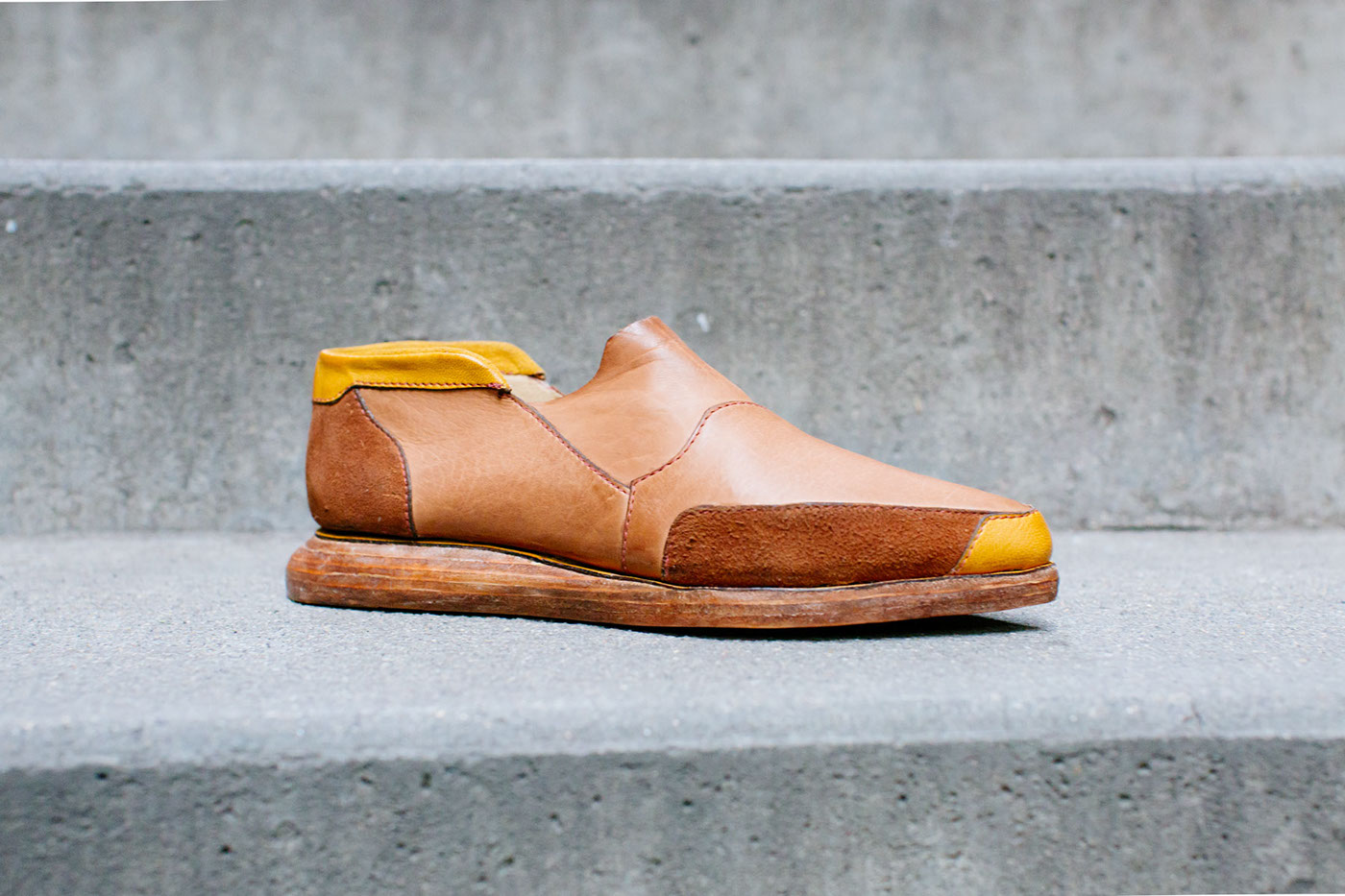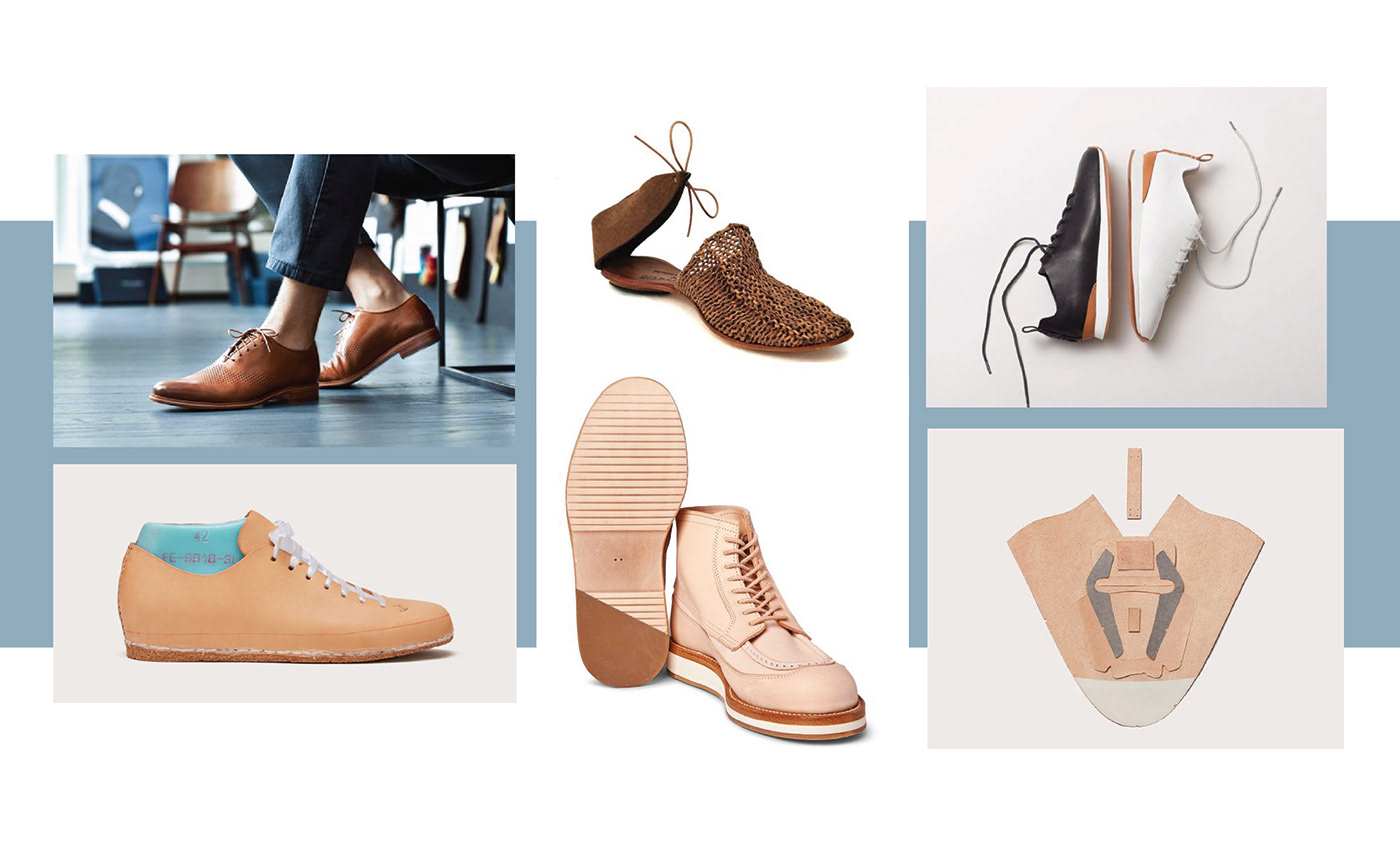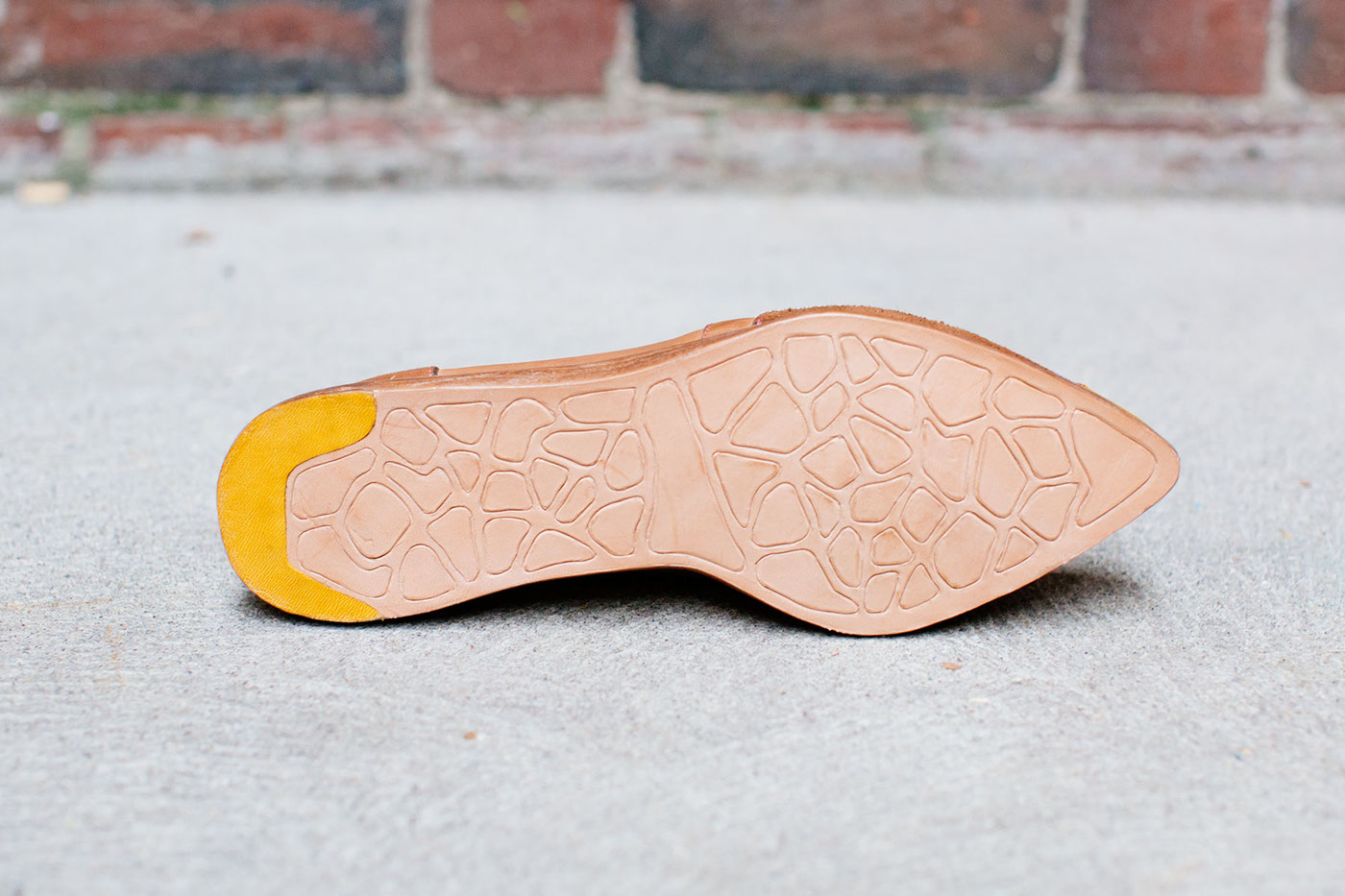
This loafer was designed to take advantage of the natural properties of sustainably produced leather. Different areas of a vegetable-tanned leather hide have different levels of flexibility, structure, and rigidity: structural and rigid along the spine, glovey and flexible around the stomach. Cutting from along the spine for the heel, from the ribs for the toe, and from the stomach for the throat of the shoe, I used only vegetable tanned calfskin and kidskin in the upper of this shoe to achieve a diversity of physical properties that is usually only achieved by a combination of synthetic materials. The leather in the upper was sourced from family-owned and operated tannery Pergamena in upstate New York, and the sole is stacked vegetable tanned soling leather filled with cork for lightness and compression.
Materials: Vegetable tanned calfskin, vegetable tanned kidskin, vegetable tanned leather splits, 8/9 ounce vegetable tanned soling leather, natural cork, bonded nylon thread
Photography by Lucas Vasilko
http://www.lucasvasilko.com/

Inspiration images

Process images- Upper design interations, lasting, stacking and shaping the midsole, breaking the last, and the final shoe next to the first sketch






